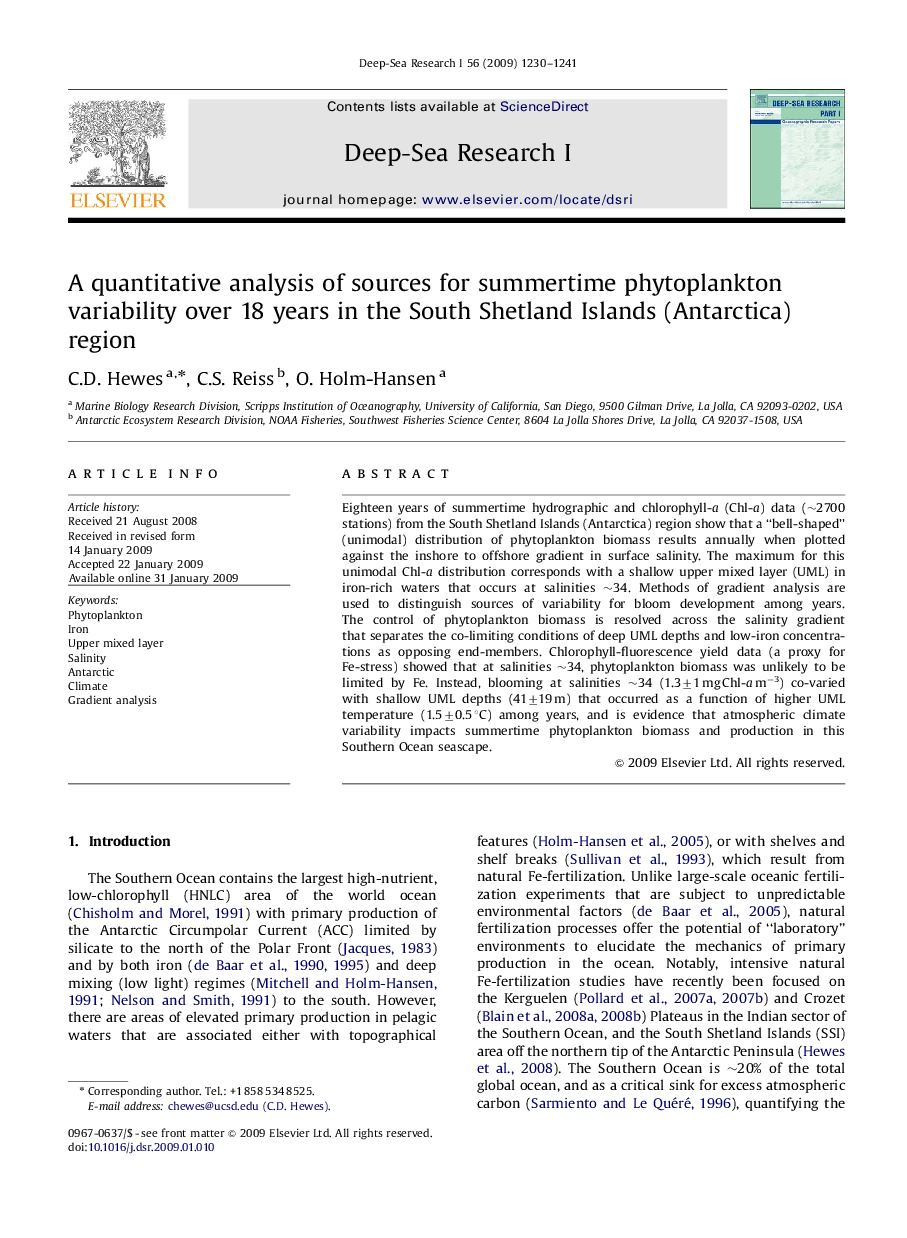| Article ID | Journal | Published Year | Pages | File Type |
|---|---|---|---|---|
| 4535063 | Deep Sea Research Part I: Oceanographic Research Papers | 2009 | 12 Pages |
Abstract
Eighteen years of summertime hydrographic and chlorophyll-a (Chl-a) data (â¼2700 stations) from the South Shetland Islands (Antarctica) region show that a “bell-shaped” (unimodal) distribution of phytoplankton biomass results annually when plotted against the inshore to offshore gradient in surface salinity. The maximum for this unimodal Chl-a distribution corresponds with a shallow upper mixed layer (UML) in iron-rich waters that occurs at salinities â¼34. Methods of gradient analysis are used to distinguish sources of variability for bloom development among years. The control of phytoplankton biomass is resolved across the salinity gradient that separates the co-limiting conditions of deep UML depths and low-iron concentrations as opposing end-members. Chlorophyll-fluorescence yield data (a proxy for Fe-stress) showed that at salinities â¼34, phytoplankton biomass was unlikely to be limited by Fe. Instead, blooming at salinities â¼34 (1.3±1 mg Chl-a mâ3) co-varied with shallow UML depths (41±19 m) that occurred as a function of higher UML temperature (1.5±0.5 °C) among years, and is evidence that atmospheric climate variability impacts summertime phytoplankton biomass and production in this Southern Ocean seascape.
Related Topics
Physical Sciences and Engineering
Earth and Planetary Sciences
Geology
Authors
C.D. Hewes, C.S. Reiss, O. Holm-Hansen,
